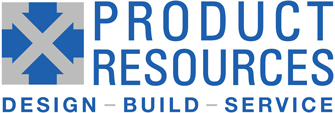In manufacturing, the goal is always a Quality product, delivered On Time, and at the Lowest Cost.
That’s what we all want. But in the real world, there are inherent trade-offs that always enter into the equation. Sometimes, if you need rush delivery, you will pay more. Similarly, if you need to reduce your costs, you will need to allow for slower delivery or a lower quality product.
This page is about how we manage these seemingly conflicting requirements.
It makes sense if you think about it.
If your priorities are to have a quality product and expedited delivery, it will cost more to rush the delivery. If cost is an issue, maybe allowing more time would allow suppliers to deliver at a lower cost. You can see the cost/delivery trade off with many suppliers quoting rush delivery or expediting fees to disrupt their production schedules. Some may want very fast delivery and low price, and “don’t worry about the quality”. They never mean it.
Of the three, Product Resources does not sacrifice quality. We have found that shipping something that is not ready because the customer needs it “right now”, is not in our customer’s best interest. It is possible to trade delivery for price, but there is a better way, and it involves a bit of planning.
The Production Schedule is the planning tool we use to ensure our on-time delivery of the products our customer requires, at the price they need. It is hard to do on an initial order for product, but if we can work on a contract basis, with a forecast that is periodically updated, we can have much more flexible delivery schedules while maintaining the same cost. Think of the manufacturing process like a freight train. It’s hard to get it moving, but once it is, it is easier to speed it up and slow it down a little than to stop and start.
The trick is to have periodic deliveries which we can use to schedule similar deliveries with our suppliers. When the schedule shifts, we can use material that is “in the pipeline” to handle rush orders by using our ERP system to reschedule deliveries quickly. Our manufacturing space is flexible and product flow can be reconfigured quickly. Not every schedule change can be accommodated seamlessly, but most can be handled.
If orders are kept on a PO-to-PO basis, it is difficult to be as flexible because orders with long lead items are always starting out with a minimum delivery time longer than the longest lead time item, whereas continuous production with a forecast allows us to keep the long lead items always on order, so some are just a few weeks away.
